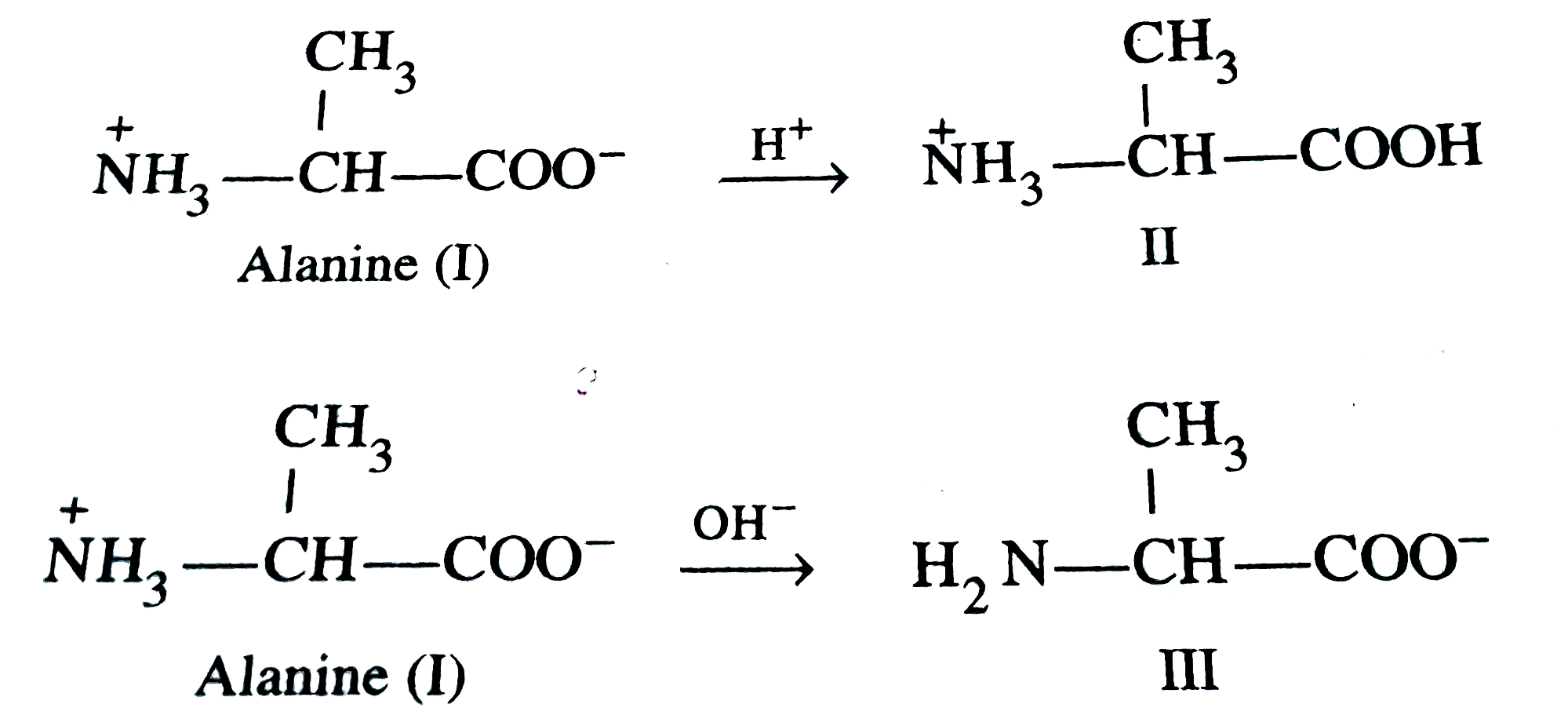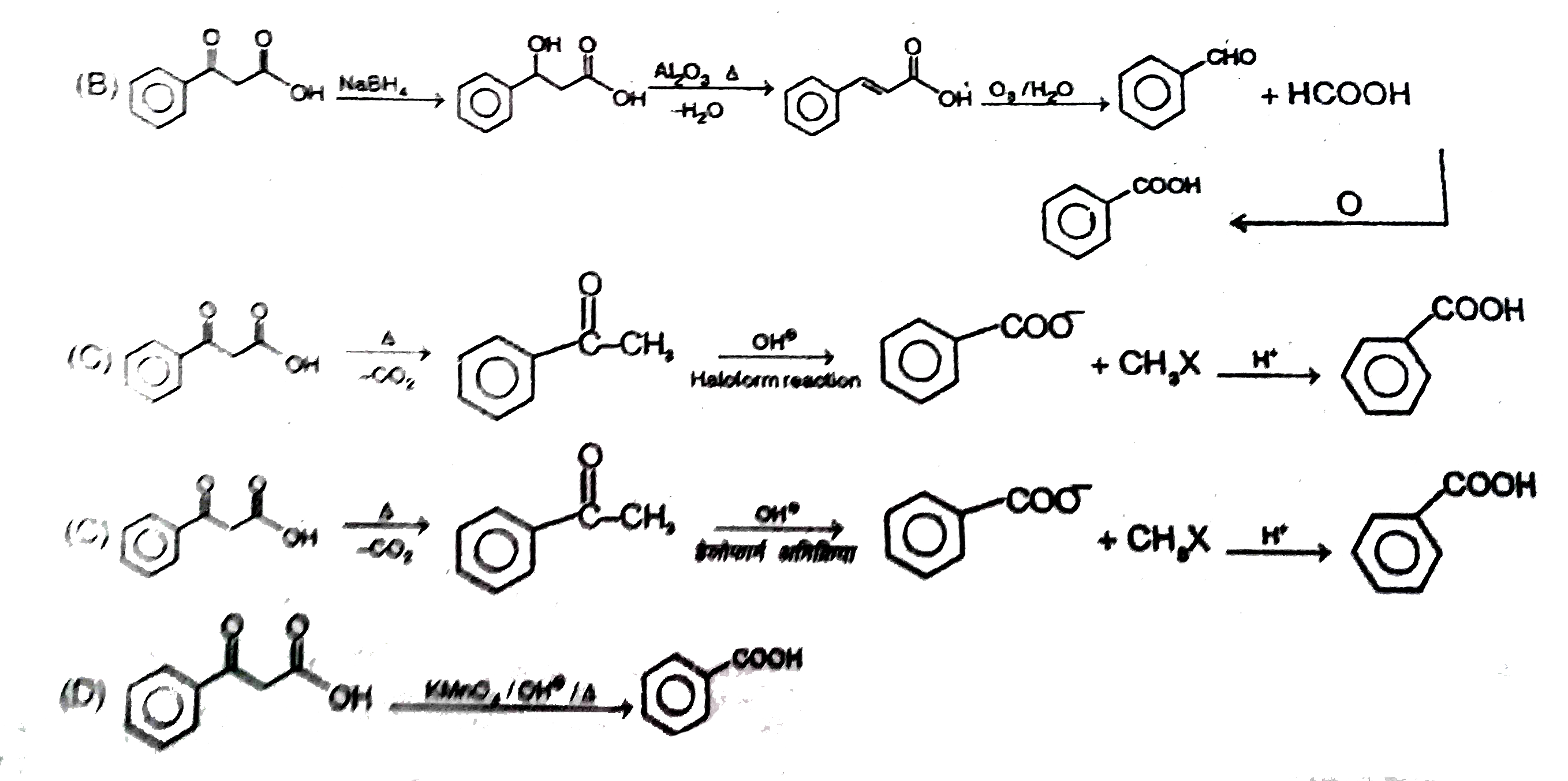InterviewSolution
This section includes InterviewSolutions, each offering curated multiple-choice questions to sharpen your knowledge and support exam preparation. Choose a topic below to get started.
| 8251. |
The space model which is obtained by joining the points representing various bonded atoms gives the shape of the molecule. The geometry of the molecule is definite relative arrangement of the bonded atoms in a molecule. The shape and geometry of a molecule is explained by valence shell electron pair repulsion theory given by Gillespie and Nyholm. Which molecule has both shape and geometry identical ? (I) SnCl_(2) "" (II) NH_(3) "" (III) PCl_(5) "" (IV) SF_(6) |
|
Answer» I, III and IV |
|
| 8252. |
The use of common salts, e.g., NaCl or CaCl_2 anhydrous is made to clear snow on the roads. This causes: |
|
Answer» A LOWERING in f.pt. of water |
|
| 8253. |
The space model which is obtained by joining the points representing various bonded atoms gives the shape of the molecule. The geometry of the molecule is definite relative arrangement of the bonded atoms in a molecule. The shape and geometry of a molecule is explained by valence shell electron pair repulsion theory given by Gillespie and Nyholm. Which is not the electron geometry of covalent molecules ? |
|
Answer» PENTAGONAL bipyramidal |
|
| 8254. |
Which of the following statements are correct for an electron that has n = 4 and m = -2? |
|
Answer» The electron may be in a p-orbital. |
|
| 8255. |
Which of the following reagent is used to convert gt C = O "to " gt CH_(2) ? |
|
Answer» `ZNHG + H_(2)O` |
|
| 8257. |
Write the products of oxidation of glucose with : Bromine water |
| Answer» Solution :`UNDERSET("GLUCOSE")underset(CH_(2)OH)underset("|")overset("CHO")overset("|")(("CHOH")_(4)) + [O] overset(Br_(2) - H_(2)O)to underset("Glucose acid")underset(CH_(2)OH)underset("|")overset("COOH")overset("|")(("CHOH")_(4))` | |
| 8258. |
What happens when Oxidation of acetoneoxime with trifluoroperoxy acetic acid. |
|
Answer» SOLUTION :Oxidation of acetoneoxime with trifluoroperoxy acid gives 2-nitropropane. `underset(("Acetoneoxime"))(CH_(3) - underset(CH_(3))underset(|)(C) = N - OH) underset((O))overset(CF_(3)COOOH)rarr underset(("2-nitropropane"))(CH_(3) - underset(CH_(3))underset(|)(CH)-NO_(2))` |
|
| 8259. |
The reducing agents to convert metal oxides to metals are carbon, carbon monoxide or even some metals. |
|
Answer» |
|
| 8260. |
Which of the following statements is/ are true? (I) Ethers are soluble in cone. H_2SO_4 but separate out on addition of water. (II) Ethers are used as solvents for BF_3 and Grignard reagent. (III) Mononitration of p-methylanisolc gives 2-nitro-4-methylanisole (IV) Monobromination ofp-ethoxyphenol gives 2-bromo-4-ethoxyphenol (V) 4-ChlorophenoI (I) will dissolve in NaOH but 4-chloro-1 -methyl benzene (II) will not. (VI) 4-Methyl benzoic (111) acid will dissolve in aq. NaHCO_(3) , but 4-methyl phenol (IV) will not. (VII) 2,4,6-Trinilrophenol (V) will dissolve in aq. NaHCO_(3)but 4-methyl phenol (VI) will not. (VIII) 4-Ethyl phenol (VII) will dissolve in aq. NaOH but ethyl phenyl ether (VI11) will not. |
|
Answer» `underset("Acid"_(1))([R_(2)OH])^(+) + underset("Base"_(2))(H_(2)O) to underset("Base"_(1))(R_(2)O) + underset("Acid"_(2))(H_(3)O^(+))` (II) Due to unshared electron pairs, ETHERS act as Lewis bases and hence easily react with Lewis acids like `BF_3` and RMgBr to form coordinated COMPOUNDS. `(C_(2)H_(5))_(2) OVERSET(..)o + BF_(3) to (C_(2)H_(5))_(2) overset(..)o : overset(+)(BF_(3)) 2(C_(2)H_(5))_(2)overset(..)O: + RMgBr to (C_(2)H_(5))_(2)O to underset(Br)overset(R)(Mg) larr O(C_(2)H_(5))_(2)` Note that two molecules of ether coordinate tetrahedrally with one `Mg^(2+)` (III)  (IV)  (V) Due to -I effect of Cl, 4-chlorophenol is acidic and dissolves in NaOH, but (II) is an aryl halide and does not dissolve. (VI) (III) is an acid and dissolves in `NaHCO_3` but (IV) is a phenol and does not dissolve. (VII) Although (V) is a phenol, because of the presence of `(3NO_2)` group, it is exceptionally acidic (pKa=0.38). So it dissolves in `NaHCO_3`, but (VI) is a phenol (pKa= 10.17) and will not dissolve. (VIII) (VII) is a phenol and dissolves in NaOH, but (VIII) is an ether, and does not dissolve. |
|
| 8261. |
Which will form lactone on treatment with NaOH? |
|
Answer» `alpha`-BROMO acid |
|
| 8262. |
Which of the following pair of monomers are used in preparation of PHBV |
|
Answer» `beta`-hydroxy butyric acid, `beta`-hydroxy valeric acid ` to [-O-UNDERSET(CH_(3))underset(|)(C)H-CH_(2)-underset(O)underset(||)(C)-O-underset(CH_(3))underset(|)underset(CH_(2))underset(|)(C)H-CH_2-underset(O)underset(||)(C)-]` |
|
| 8263. |
Two samples of DNA, A and B have melting points 340 K and 350 K respectively. This is because |
|
Answer» B has more GC content than A |
|
| 8264. |
Which of the following is least covalent hydride? |
|
Answer» `H_(2)O` |
|
| 8265. |
Why are substances like platium and palladium often used for carrying out electrolysis of aqueous solutions ? |
| Answer» Solution :PLATINUM and palladium FORM inert ELECTRODES, i.le., they are not atacked by the ions of the electrolyre or the products of electrolysis. Hence, they are USED as electrodes for carying out the electroluysis. | |
| 8266. |
What is the unit of specific conductiivity ? |
|
Answer» S |
|
| 8267. |
Under a goven set of experimental conditions, with increase in the concentration of the reactants, the rate of a chemical reaction |
|
Answer» Decreases |
|
| 8268. |
Which of the following compounds exhibit cis and trans forms ? |
|
Answer» 2- Butyne |
|
| 8269. |
When a zinc rod is suspended in copper sulphate solution |
|
Answer» the TEMPERATURE of the solution rises |
|
| 8270. |
Two solutions of KNO_3 and CH_3COOH are prepared separately. Molarity of both is 0.1 M and osmotic pressures are P_1 and p_2 respectively. The correct relationship between the osmotic pressure is : |
|
Answer» `P_2 GT P_1` |
|
| 8271. |
Which one of the elements with the following outer orbital configuration may exhibit the largest number of oxidation states ? |
|
Answer» `3D^(5) 4S^(1)` |
|
| 8272. |
The reagent required to convert propene to 1-propanol is |
|
Answer» `B_(2)H_(6)` followed by `H_(2)O_(2)//NaOH` |
|
| 8273. |
What volume of hydrogen gas at 273K and 1atm pressure will be consumed in obtaining 21.6 g of elemental boron (atomic mass = 10.8) from the reduction of boron trichloride by hydrogen ? |
|
Answer» 67.2 L volume consumed = 67.2 |
|
| 8274. |
Transition elements containing higher oxidation number possess…. Property |
|
Answer» REDUCING agent |
|
| 8275. |
Which of the following radicals can bring about the highest oxidation state of a transition metal? |
| Answer» ANSWER :A | |
| 8276. |
Which of the following sequence correctly represents the decreasing acidic nature of oxides? |
|
Answer» `NO_2` >`CO_2` >`B_2O_3` >`BEO` > `Li_2O` |
|
| 8277. |
Which of the following can be employed for the conversion of potassium manganate to potassium permanganate? A) Ozone B) Chlorine C) Electrolysis |
|
Answer» A, B |
|
| 8278. |
Write the names and structures of the monomers of each of the following polymers : (i) Natural rubber (ii) Buna-S |
|
Answer» SOLUTION :(i) Monomer of natural rubber is Isoprene `UNDERSET("2-methyl Buta-1,3-diene")(CH_3 = underset(CH_3)underset(|)C - CH=CH_2)` (ii) Monomer of Buna-S is Buta 1,3-diene `(CH_2=CH-CH=CH_2)` and styrene `(C_6 H_5 - CH=CH_2)`. ITIS used in the manufacture of automobile tyres. |
|
| 8279. |
Which of the following is not produced by human body ? |
| Answer» SOLUTION :Vitamin | |
| 8280. |
Which one of the following is used to make 'non stick' cookware ? |
|
Answer» PVC |
|
| 8281. |
When vapours of ethyl alcohol are passed over Al_2O_3, at 533 K, it forms |
| Answer» Answer :D | |
| 8282. |
Write the structure of alanine at pH =2 and pH =10. |
Answer» Solution :Alanine exists as a zwitterison (I) in aqueous solution. In presence of acid `(pH=2)`, the basic `-COO^(-)` GROUP ACCEPTS a proton to give cation (II) but in presence of a base `(pH=10)`, the acidie `-overset(N)H_(3)` group donates a proton to the base and THUS exists as an anion (III). 
|
|
| 8283. |
Which of the following electrophilic substitution reaction represent correct product. |
|
Answer»

|
|
| 8284. |
Which of the following has maximum reactivity with an electrophile E^(+) ? |
|
Answer» <P>Toluene |
|
| 8285. |
Xenon reacts directly with |
|
Answer» `F_2` |
|
| 8286. |
The repeating units of PCTEF is |
|
Answer» `CF_(2)=CF_(2)` |
|
| 8287. |
Which of the following compounds are formed by sp^3d hybridisation |
|
Answer» `XeF_4` 
|
|
| 8288. |
What is homogenous catalysis? Give an example. |
|
Answer» Solution :A REACTION in which all the reactants and the catalyst are in the same phase is called homogeneous catalysis. `2SO_(2(G)) + O_(2(g))overset(NO_(g))to 2SO_(3(g))` |
|
| 8289. |
Which of the following aqueous solutions has highest freezing point? |
|
Answer» 0.1 molal `A1_(2)(SO_(4))` As m = 0.1 molal for all given solutions, THUS, lower the value of i, lower will be the depression in freezing point (`DeltaT_(f)`) and higher will be the freezing point of the solution. For `Al_(2) (SO_(4))_(3)`, i = 5 For `BaCl_(2)`, i = 3 For `AICI_(3)` , i = 4 For `NH_(4)Cl` , i = 2 Thus, 0.1 molal `NH_(4)Cl` will have highest freezing point. |
|
| 8290. |
What is used to prevent food from spoiling by microorganisms like fungi or to preserve food for a long time ? |
|
Answer» FOOD PRESERVATIVES |
|
| 8291. |
Which of the following statements are correct for CSBr_(3) |
|
Answer» It CONTAINS `CSBr_(3)` and ions `Br_(3)^(-)` ions (B) It contains `CSBr_(3)` and `Br^(-)` and lattice `Br_(2)` molecule |
|
| 8292. |
Write method of preparation of urotropine and give its use. |
|
Answer» Solution :Hexamethylene tetramine is called urotropine. It is FORMED when formaldehyde REACTS with ammonia `underset("Formaldehyde")(6CHCHO)+4NH_(3) to underset("Urotropine")((CH_(2))_(6)N_(4))+6H_(2)O` It is used as antiseptic for urinary TRACT infections. |
|
| 8293. |
When SO_2 gas is passed through an acidified solution of K_2 Cr_2 O_7, the solution turns ___ in colour. |
|
Answer» the solution BECOMES BLUE |
|
| 8294. |
Write the structure of the major organci product expected from the following reaction . . |
| Answer» SOLUTION :` (##KSV_CHM_ORG_P2_C15_E01_172_S01.png" WIDTH="80%">. | |
| 8295. |
Which of the statements about solutions of electrolytes is not correct? |
|
Answer» CONDUCTIVITY of solution depends upon SIZE of ions. |
|
| 8296. |
What is Cogultion ? |
| Answer» | |
| 8297. |
Which of the following form tetrahydridoborates |
|
Answer» `(LI)` |
|
| 8298. |
Which of the following reagent form oxime with carbonyl compound ? |
|
Answer» `NH_(3)OH` |
|
| 8300. |
Write the cell formulation and calculate the standard cell potential of the galvanic cell in operation of which the reaction taking place is: 2Cr(s)+3Cd^(2+)(aq)to2Cr^(3+)(aq)+3Cd(s) Calculate Delta_(r)G^(@) for the above reaction. (Given: E_(Cr^(3+)//Cr)^(@)=-0.74V,E_(Cd^(2+)//Cd)^(@)=-0.40V,F=96500" "C" "mol^(-1)) |
|
Answer» `2Crto2Cr^(3+)+6e^(-)` or `3Cd^(2+)+6e^(-)to3Cd`. Hence, n=6 `E_(cell)^(@)=-0.40-(-0.74)=+0.34V,Delta_(r)G^(@)=-nFE_(cell)^(@)` |
|